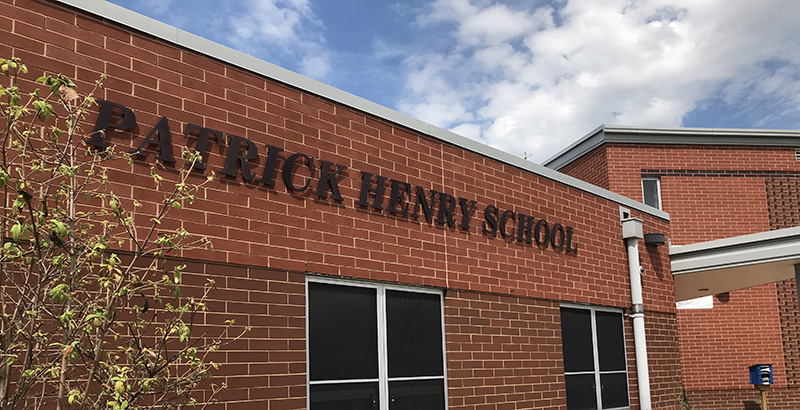School Names Come Under Fire in Cleveland After Black Lives Matter Protests: Patrick Henry and Louis Agassiz First on Chopping Block

Cleveland City Councilman Kevin Conwell has long been troubled that a school in his ward is named after Patrick Henry.
Sure, Henry was a “founding father” of the country, one whose cry of “Give me liberty or give me death” still echoes today. But he also owned slaves, bought and sold them throughout his life and still had 67 when he died.
And his name is on a school where 98.9 percent of students are Black?
“We have little black children attending Patrick Henry school, keeping the name of a former oppressor alive and doing their studying under his name,” Conwell said. “That has to change.”
Cleveland is joining the wave of cities taking a hard look at the people schools are named after following the nationwide Black Lives Matter protests this summer. A swell of districts have changed school names in the past few months, as families and board members scrutinize the racist actions and beliefs of some historical figures and question whether they are worthy of having schools named after them.
There are widespread moves to drop names of Confederates like Robert E. Lee and Stonewall Jackson from schools. Virginia Gov. Ralph Northam even urged schools across that state to change Confederate school names last month.
Other figures have come under fire.
Once Princeton University decided to drop former president Woodrow Wilson’s name from its public policy school, cries rose in Portland, Dallas, Tacoma, Long Beach and Fargo to rename Woodrow Wilson schools in those cities.
And some Detroit teachers want the names of founding fathers George Washington, Thomas Jefferson and James Madison, all of whom owned slaves, removed from charter schools in that city.
In Cleveland, the school board and district started a review of all school names early this summer. The district won’t say when that review will be done, but it supports efforts by Conwell and other city officials to target some names.
The Cleveland chapter of the NAACP has not challenged any school names, but it supports those raising questions. Chapter president Danielle Sydnor said students are taught too little about the people whose names are on their schools, so students rarely know their backgrounds.
“Not every person deserves to have their name on a building for life,” Sydnor said. “As we become more aware and more conscious as a society, we do have to grapple with the things that make us less than a perfect union.”
At Conwell’s urging, Cleveland City Council passed a resolution last week asking the school board to rename the Patrick Henry school for Stephanie Tubbs Jones, the late Black congresswoman who grew up in that neighborhood.
There are two other schools in Cleveland named after founding fathers who owned slaves — Thomas Jefferson and Benjamin Franklin. There are no challenges to those names yet. Franklin, though a slave owner in his young adulthood, became an abolitionist in his later years.
“You’re not going to find a perfect person of any race,” Sydnor said. “We all bear imperfection. The moment we lose sight of that, we don’t allow people the space for progress.”
It’s the next rung of figures schools are named for that could be under fire next. Cleveland has several schools named after professors and academics, other political figures and judges who have complicated writings and histories.
First in line is Louis Agassiz elementary school, named for a geologist and geneticist who was an abolitionist, but who is viewed as a main proponent of “scientific racism” in which Blacks are cast as lesser beings through science. Starting in the 1840s, Agassiz called Blacks a separate species, not just a separate race, and argued against intermarriage and giving Blacks equal rights.
“The brain of the Negro is that of the imperfect brain of a seventh month’s infant in the womb of a White,” Agassiz said at an 1847 lecture in Charleston, N.C.
Cleveland City Councilman Brian Mooney already has a resolution being written to strike Agassiz’s name from a school that is 39 percent black and 19 percent Hispanic.
“When you look up and see who your school is named after, these kids see somebody who thought they were not even the same species as white people, but an inferior race,” Mooney said. “That can’t stand. That can’t stand at a school.”
Mooney said residents of his ward have complained to him about changing the name of a school they attended, but he said they change their mind once he explains Agassiz’s history.
Cleveland is not the only place raising objections. The Cambridge, Massachusetts, school board dropped the name of the former Harvard professor several years ago, and both Fargo and Chicago school districts are weighing removing the Agassiz name from schools there. Stanford University is also debating whether to remove a statue of him from campus.
A few other school names in Cleveland could also raise objections:
Albert Bushnell Hart elementary: Hart, another Harvard professor, though one who gained acclaim after the Civil War, has a complicated history. Raised in Cleveland, he sometimes pressed for equal treatment of Blacks and was an adviser and mentor of noted Black scholar W.E. DuBois. But he also believed in the inferiority of the Black race.
In his 1910 book The Southern South, he compared traits and accomplishments of whites and Blacks and concluded: “Race measured by race, the Negro is inferior, and his past history in Africa and in America leads to the belief that he will remain inferior in race stamina and race achievement.”
James Ford Rhodes High School: Noted for his books about U.S. history, particularly the Reconstruction period after the Civil War, Rhodes, who was born in Cleveland and first rose to fame as an industrialist there, had a low opinion of Blacks. He called former slaves “one of the most inferior races of mankind,” and he wrote that the North gave Blacks rights too fast and hurt the reunification of the nation.
Joseph Gallagher elementary school: Even schools named after local figures like past school board members can be problematic. This school is named after a former Cleveland school board member who died in 1988. Gallagher is viewed by some, including former Cleveland Teachers Union head Michael Charney, as partly at fault for the district’s longtime segregation that led to busing and forced integration of schools in 1979.
“He also supported the obstacles placed in the way of implementing the federal court order to desegregate Cleveland schools,” Charney said.
Others who have studied the board in that period do not remember him as a major player in segregation efforts and would want to review specific actions before raising a red flag.
Help fund stories like this. Donate now!

;)
